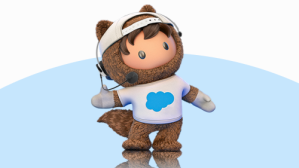Customer experience is not just a contributor to customer satisfaction. It is also a critical differentiator for businesses. Customer experience (CX) takes on new importance at a time when products are losing their unique selling points (USPs) like brand and price.
The Salesforce State of the Connected Customer report shows 88% of customers say the experience a company provides is as important as its product or services.
To create those outstanding customer experiences, businesses must standardise customer service and evaluate customer feedback.
But first, why measure customer experience?
The advantages of measuring customer experience
Measuring customer experience lets you:
- Define customer success standards and create consistent service quality
- Use benchmarking to assess and improve performance and productivity
- Uncover insights like competitive intelligence that can increase sales and enhance customer satisfaction
- Easily identify new ways of increasing business efficiency
- Use CX metrics to track return on investment (ROI) and set new goals
Measuring CX helps you learn what customers enjoy most about their experience and what needs to be improved.
How can you measure customer experience effectively?
Here are five ways to measure your CX to increase business efficiency and reach your sales goals.
Monitor customer experience metrics
Use customer-focused metrics like Customer Satisfaction Score (CSAT), Customer Efforts Score (CES) and Average Resolution Time (ART).
Look out for scores like Net Promoter Score (NPS), which let you know how likely a customer is to recommend your brand to someone they know. Similarly, Customer Effort Score (CES) can help you get a clear picture of how your customers feel about your business, based on their experience.
Too many numbers? An integrated platform, like the Salesforce Customer 360, can help you collate customer satisfaction data from different sources and create relevant custom metrics in seconds.
Collect direct responses from customers
A powerful way to measure your CX is to seek customer feedback with well-designed surveys, questionnaires, and polls. This will give you insight into their pain points and challenges.You can then use this feedback to identify inefficiencies across touchpoints and channels.
Insights from nearly 17,000 consumers & business buyers
Discover more customer engagement trends



Analyse customer churn
It’s a reality for any business that you will sometimes see customers leave. If you can find out why customers have stopped using your services, it can help improve sales and service delivery processes. Customer data including average churn period, channels with maximum customer turnover, and purchase categories that see higher than average churn, can be revealing. Using an integrated service CRM will ensure all your teams can access insights from the CX data.
Study trends in support ticket volume
Customer support is an important part of the customer experience. To increase effectiveness, you can leverage support tickets to identify recurring issues, highlight them to respective teams, and smoothen customer journeys .This helps increase business efficiency and drive customer delight. For instance, if data from Service Cloud shows long wait times are undermining customer experience, you can invest in automated responses for common questions. You can also introduce a self-service portal. These portals can offer FAQs and ‘how-to’ videos or tutorials in the customer’s preferred language.
Map social media sentiment
Tracking customer sentiment on social media is a powerful way to strengthen your CX measurement framework. You can measure sentiment by monitoring brand mentions on social networks and analysing the words used to talk about the company. Identifying positive or negative words, following relevant hashtags, or tracking keywords to monitor your online brand perception are some effective methods. By following conversations related to your brand as well as your competitors, you can stay ahead of the curve in understanding and forecasting your CX score.
Use Salesforce Service Cloud to create delightful and cost-effective customer experiences
With Service Cloud, businesses can resolve issues quickly across any channel and provide connected, personalised experiences. Service Cloud helps you access intelligent, actionable data that can enhance customer experiences, reduce contact centre costs, and boost agent productivity.
The end result? Complete visibility into every customer interaction, standardised customer service and a reduction in overall cost.
Insights from 8,000 customer service agents & leaders
Learn about the trends dominating the service industry



Join us at Salesforce World Tour Essentials Asia and learn how Salesforce can help accelerate growth, drive productivity & unite teams around a shared view of your customer. Register now
This post originally appeared on the India version of the Salesforce blog.









